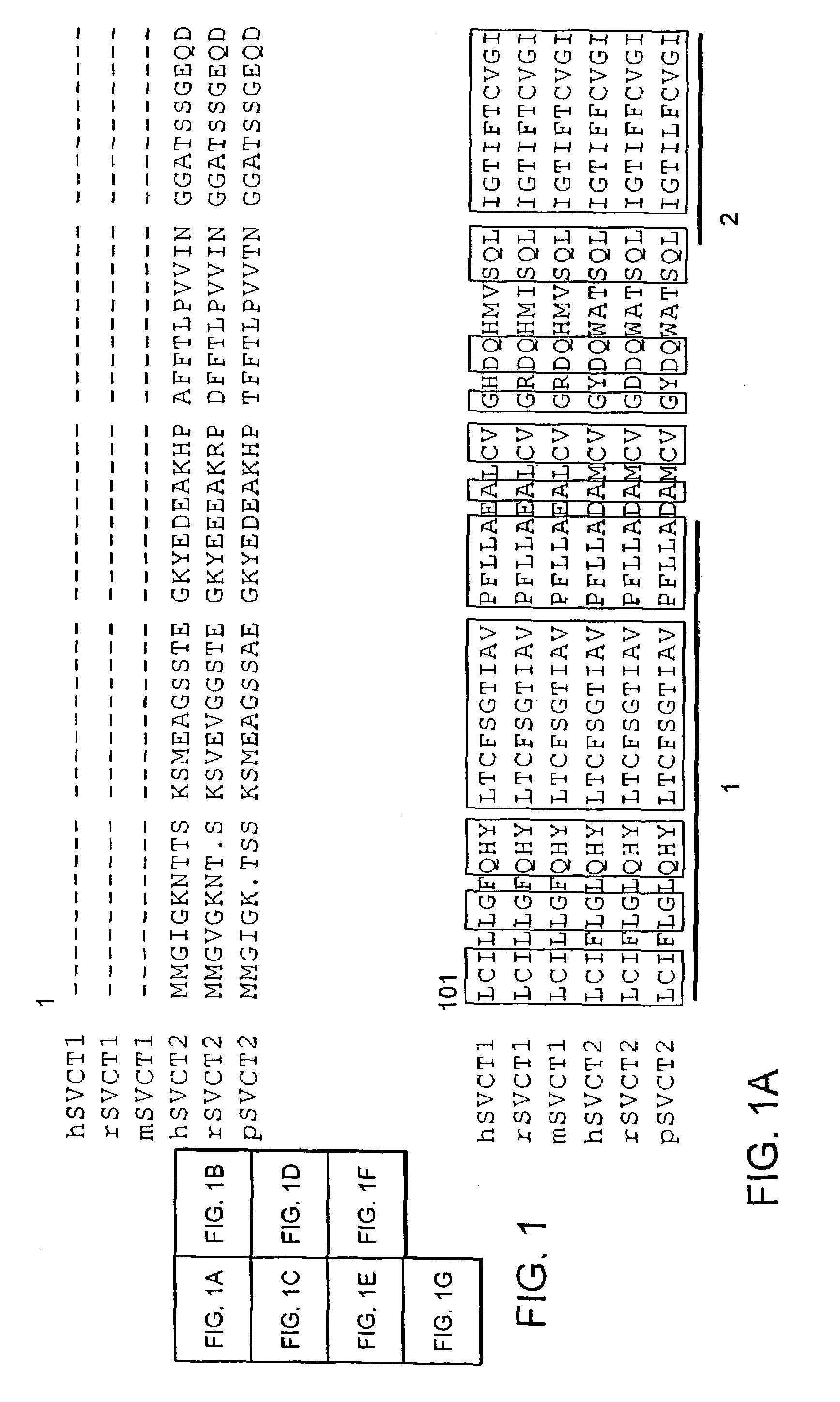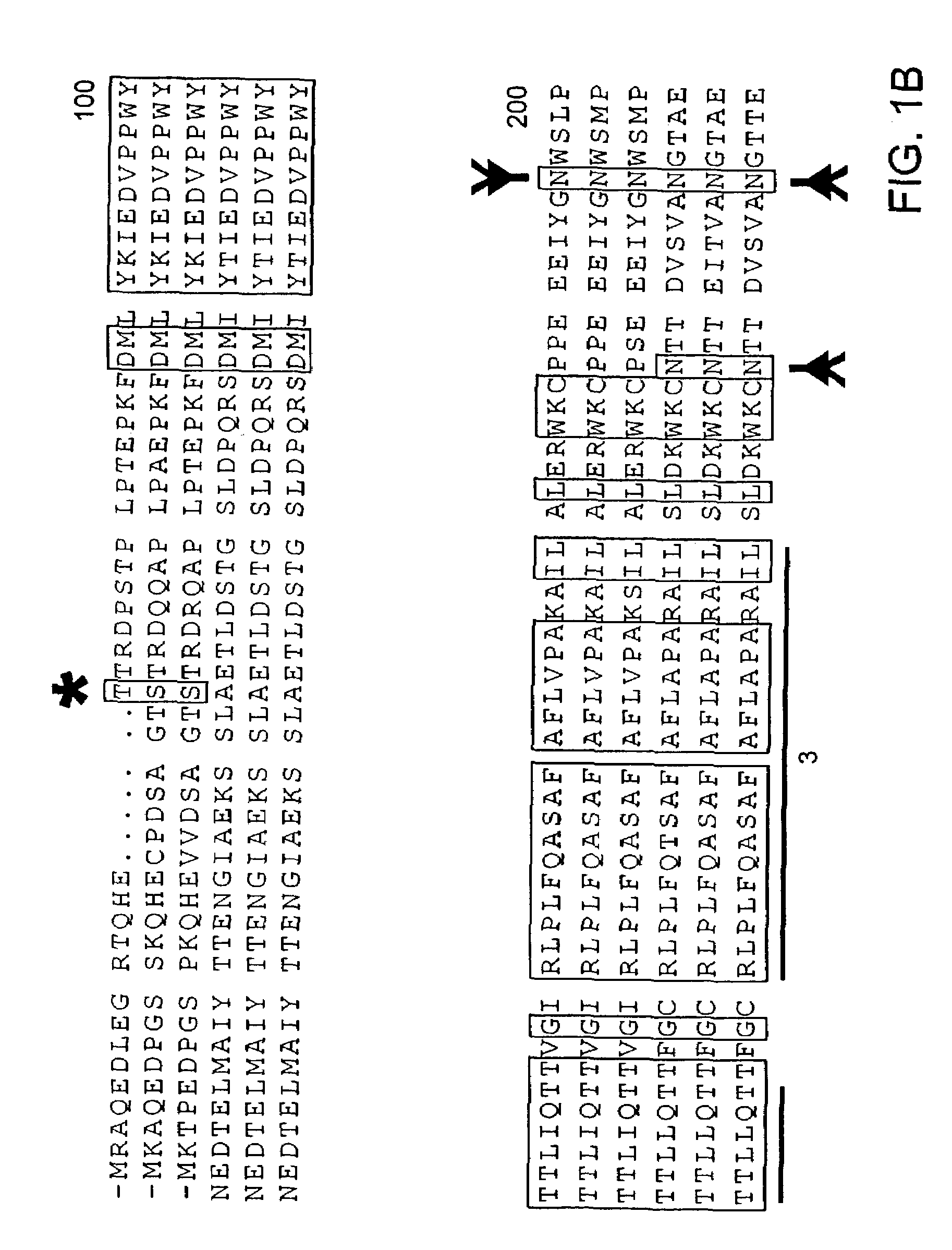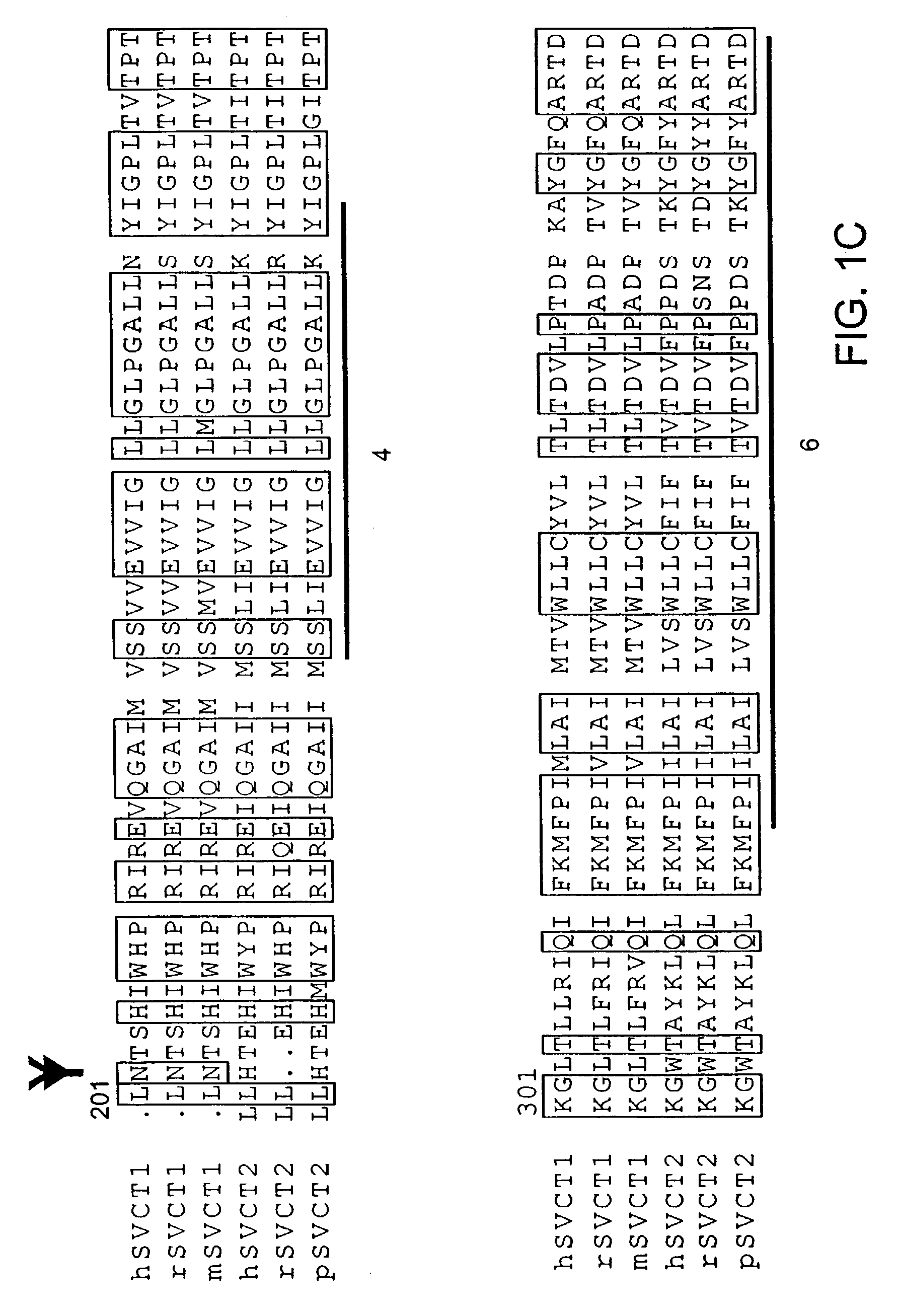Methods for transporting vitamin C
a technology of transporting and vitamin c, applied in the direction of peptide sources, instruments, applications, etc., can solve the problem of excessive accumulation of vitamin c, and achieve the effect of facilitating oral administration
- Summary
- Abstract
- Description
- Claims
- Application Information
AI Technical Summary
Benefits of technology
Problems solved by technology
Method used
Image
Examples
Embodiment Construction
Brief Summary of the Invention
[0008]One aspect of the invention comprises, as a composition of matter, a non-naturally occurring vitamin C-transporter protein. The transporter protein is found to exist in two forms, referred to herein as SVCT1 and SVCT2. Localization studies demonstrate that SVCT1 is largely confined to bulk-transporting epithelia such as intestine and kidney, where it serves whole-body homeostasis. SVCT2 appears to account for the widespread tissue-specific uptake of vitamin C, and is found in neural, endocrine, exocrine and endothelial tissues as well as in osteoblasts. In the eye, SVCT2 likely transports vitamin C into the aqueous humor, the cornea and the lens (where the vitamin is required at high concentration for protection against UV radiation and oxidative stress). On the other hand, excessive vitamin C accumulation may promote the growth of astrocytic brain tumors (gliomas).
[0009]The cloning of these transporters facilitates understanding of how they funct...
PUM
| Property | Measurement | Unit |
|---|---|---|
| Fraction | aaaaa | aaaaa |
| Transport properties | aaaaa | aaaaa |
Abstract
Description
Claims
Application Information
 Login to View More
Login to View More - R&D
- Intellectual Property
- Life Sciences
- Materials
- Tech Scout
- Unparalleled Data Quality
- Higher Quality Content
- 60% Fewer Hallucinations
Browse by: Latest US Patents, China's latest patents, Technical Efficacy Thesaurus, Application Domain, Technology Topic, Popular Technical Reports.
© 2025 PatSnap. All rights reserved.Legal|Privacy policy|Modern Slavery Act Transparency Statement|Sitemap|About US| Contact US: help@patsnap.com



